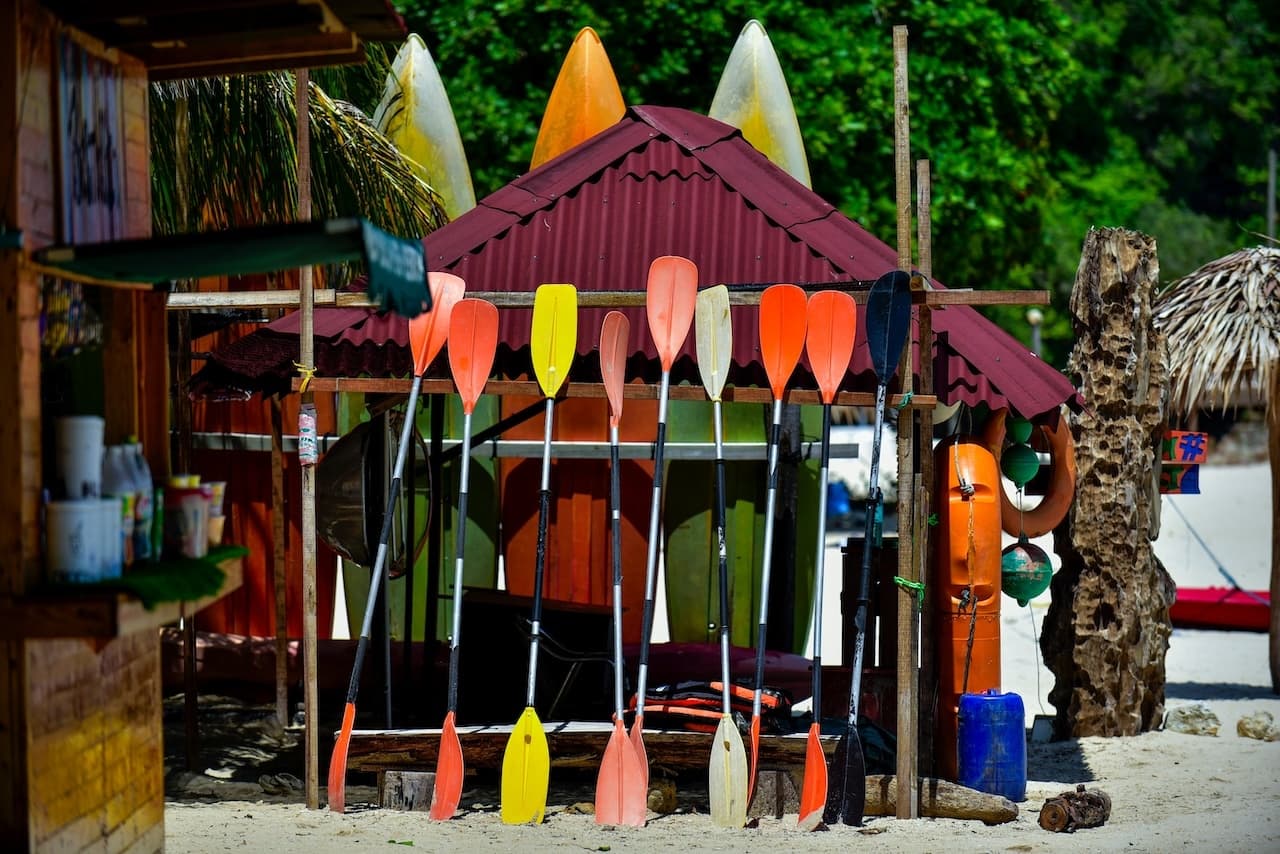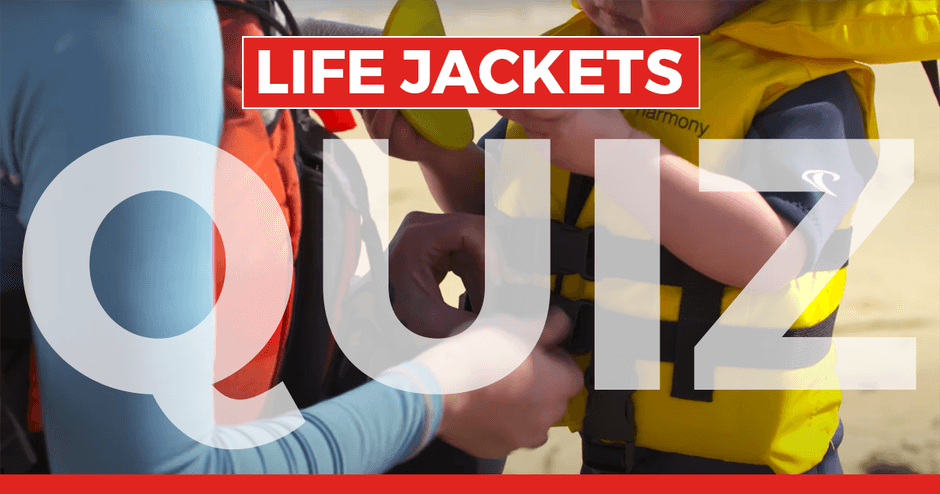Top Safety Issues To Look For When Renting Paddling Gear
Top Safety Issues To Look For When Renting Paddling Gear

Paddling on vacation checks a lot of boxes. On a kayak, canoe, or SUP board, you can see new parts of the world from a unique perspective, all while practicing a hobby you love. Many people take trips to faraway destinations specifically to enjoy the epic kayak, canoe, and SUP board opportunities. Before you hop into a rented paddling vessel in a far distant land, however, there are some serious safety issues to know about when renting paddling gear.
One of the most common safety issues with paddling rental gear is problems with your PFD. Check the buckles and straps on your like jacket, and ensure it floats properly. Cracks and holes in vessels and paddles are common, so ensure you inspect vessels and paddles before renting. Some rental companies don’t provide essentials, including kayak seats, bailers, and even fins. Always check reviews and ask for advice before choosing a rental company.
If you have a paddling trip lined up, or travel to waterfront regions frequently, then keep reading. As easy as it is to rent paddling gear just about anywhere these days, some major safety concerns can still arise. Just because renting is easy, it doesn’t mean it’s always safe. Below is a list of common safety issues paddlers face when renting paddling gear on vacation, as well as easy ways to ensure all the equipment you rent is safe to use.
Six Common Safety Problems With Paddling Rental Gear
1. Issues With PFD
There’s no safety gear more important to a paddler than a life jacket (PFD). Unfortunately, life jackets tend to be the paddling essential that is often the oldest and least reliable when you rent paddling equipment. After all, they are expensive to replace and experience a lot of wear and tear with their many uses.
Regardless of the reason, you may find the PFD you’re given has worn-out and cracked buckles, frayed or torn straps, and even signs of mold or punctures in the flotation device. Luckily, rental shops usually have a plethora of PFDs to choose from, so don’t be afraid to insist on one that is fully functional.
2. Cracks In The Paddle
Just because you are an expert paddler, it doesn’t mean the person who used the paddle before you was a pro. Some novice paddlers use paddles to push off the bottom and to navigate their vessel through tricky and rocky shallows. This can lead to cracks in the paddle.
A cracked paddle might still function, but it can break when you are far away from land. Since rental facilities rarely offer a backup paddle, you must have a paddle that is strong and free of cracks.
3. Small Leaks Or Large Scrapes On Paddling Vessel
Another major safety issue to look out for when you’re renting paddling equipment is the paddling vessel itself. Some vessels are several years old and have been through the ringer with various inexperienced paddlers.
It’s common to find a board or boat with large patches from puncture holes, and many deep scratches under the hull. If the vessel was properly repaired, it should still function safely. Still, patches, deep dings, and large scrapes are red flags, and you should get the boat in shallow water to ensure there are no small leaks in the vessel that could hinder your safety.
4. Broken Pedals
If you are renting a sea kayak with pedals, you should make sure they function properly. Steering systems on touring kayaks can be fragile, and if they aren’t regularly maintained, they might not function properly.
Before venturing out too far, take the time to test the pedals and ensure they work. If the pedals don’t work, head to shore and try to find a solution.
5. Small Holes In Inflatables
If you rent an inflatable on a beach, remember that just because it is full of air on land, it doesn’t mean there isn’t a small hole. Before launching an inflatable, test the vessel for leaks. One easy way to do this, place it in shallow water and look for tiny air bubbles. If you see bubbles, then there’s a hole.
6. Missing Fins, Bailer, Seat, Or Other Essentials
If you are renting a kayak for several hours or even days, then you need all the safety essentials that you would bring on a kayak adventure at home. When SUP boarding, ensure your board has SUP fins, especially if you are taking a SUP board on a long journey.
If you are using a sit-in kayak or canoe, insist on the use of a bailer. Any reputable kayak or canoe rental shop should have a bailer you can borrow. Also, ensure you have a seat that is both comfortable and functional.
Five Ways To Ensure You Stay Safe In Rented Gear
1. Inspect Vessel And Gear Before Launching
Always give your rented paddling vessel and accessories a thorough inspection before you launch, just as you would with a rental car. For one, you will notice any red flags, like deep dings or suspicious cracks.
Furthermore, you don’t want to be held liable for damage to the rental equipment that you didn’t cause. A detailed inspection can save your life and also save you money.
2. Read Reviews Before Renting
If you are renting gear from a popular paddling destination, then you should have plenty of companies to choose from. Do yourself a favor and read the reviews on each place before you rent gear.
User reviews tend to reveal how professional and safe the company is, and you almost always find reviews on the rental equipment quality. Even if it costs a few extra dollars, you should choose a company with consistently high marks for quality and safety.
3. Ask For Recommendations And Do Your Research
If you are taking a paddling vacation, do some research before you get there. Ask people who have been, scour Paddling.com message boards, and ask local experts. Doing research and securing a reservation in advance can help put you at ease and will save you time scrambling to find quality gear after you arrive.
4. Bring What You Can From Home
Whenever you can, you should pack paddling accessories from home. If you have room for your own PFD and bailer, bring them. Remember, many rental shops don’t have specialized accessories, including dry bags, paddling leashes, and other paddling comforts. Bringing items from home also ensures they are high quality.
5. Test The PFD Before Getting In The Boat
Since your PFD is the most essential part of your paddling safety kit, don’t just use your eyes to confirm it’s safe to use. Sure, broken buckles and missing straps are huge red flags, but sometimes you can’t see the problem with a flotation device.
The easiest way to test your life jacket is to walk into the water with it on and float on your back. It should support all your weight, and you should remain buoyant. If you start to sink, choose a different PFD.
Summing Up Safety Issues To Consider When Renting Paddling Gear
Paddling on vacation should be a leisurely adventure full of excitement and free of worry. Unfortunately, rental gear is often less safe than the equipment you’re used to using. Always check your PFD to ensure it’s in working order and floats properly.
Inspect the vessel and paddle for damage, especially cracks and tiny leaks. Confirm your paddling vessel comes with essentials that are sometimes missing, like fins and a bailer. To ensure you have quality rental gear, you should read reviews of various companies and ask for expert advice before heading to your destination.

Before you get in the water, make sure you have the most important piece of safety gear - a Personal Flotation Device (PFD). Life jackets work only when you wear them, and the law requires you to have one for every person in every boat. Test your knowledge with the Life Jacket Quiz to be sure you know your basics!
Related Articles
Canoeing and kayaking are activities that immerse you in nature, offering a sense of adventure and…
Just as vehicles have roads and rules that dictate the way they travel over land, the flow of boat…
This is as good as it gets. A 30sec ride, at sunset, at Mavericks. There's no better way to end the…
One of the best things about kayaking is that it's a healthy and fun activity to share with your whole…



